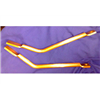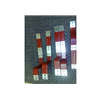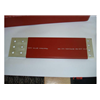
Whether someone is an independent engineering contractor or they are responsible for an entire fleet of military helicopters an effective and reliable means of working with low, high or even extremely high voltage is required. This requirement has resulted in the development of busbars.
What is a Busbar?
The versatile and flexible busbar is a thick strip of aluminum or copper that controls the flow of electricity between two points. The very first busbar was created in the 1930’s by the British Grid System and of course, busbars have come a long way since then.
While not being the most glamorous piece of equipment, busbars work with precision to ensure that electricity is conducted safely, whether within a switchboard, distribution board or even between substations.
Why Busbars?
There are various reasons why busbars are a better choice than using cables as an electricity distribution system, specifically:
- Lower system costs – Busbars lower manufacturing and internal material handling costs. They also require less assembly time and and a reduced need for parts which lowers inventory costs. This makes busbars a good option to cut down on expenses without compromising on protection and quality.
- Higher reliability – Busbars remove wiring errors altogether. And with less errors there is less of a need for reworks plus service and quality costs are reduced. Wiring harnesses will have higher failure rates than busbars, since the latter have virtually no errors. Companies utilising busbars have fewer costly repairs.
- Increased capacitance – You can increase capacitance by keeping dielectrics thin and using dielectrics that have a high relative K factor. Increased capacitance will in turn decrease characteristic impedance. With lower characteristic impedance, there will be greater effective signal suppression and noise elimination.
- Lower inductance – Thin parallel conductors, used with a thin dielectric laminated together, can help minimize the effect of inductance on the electrical circuits. Magnetic flux is minimized with opposing potentials being laminated together.
- Denser packaging – Busbars radiate heat better than insulated cables. This leads to a decrease in system size as well as cost.
- Interconnection methods – The flexibility of busbars allows a huge variety of interconnection styles. By integrating wire harnesses, pressed-in fittings and solderable connectors, busbars can be made compatible with almost every type of interface.
- Improved thermal characteristics – Busbars allows better airflow within a system. This means that the cost of decreasing the heat within systems is greatly reduced. The thin conductors and sleek design of busbars facilitate air flow.
Why should you get your Busbars from PRV?
First lets see what Simon Jones from PRV Engineering has to say about our manufacturing capabilities as they relate to busbars.
Our Busbars not only offer quality and value for money but we are a one stop shop where you can have all your Busbar, Conductors, Copper Contacts and Connection needs met.
Given that busbars are highly specialized equipment, the best course of action is to get a professional to manufacture and custom install the busbars for you. As one of the leading engineering services, PRV Engineering offers some of the best quality busbars and installation and maintenance services on the market today.
This site uses Akismet to reduce spam. Learn how your comment data is processed.


 Mail:
Mail: 






Leave a Comments